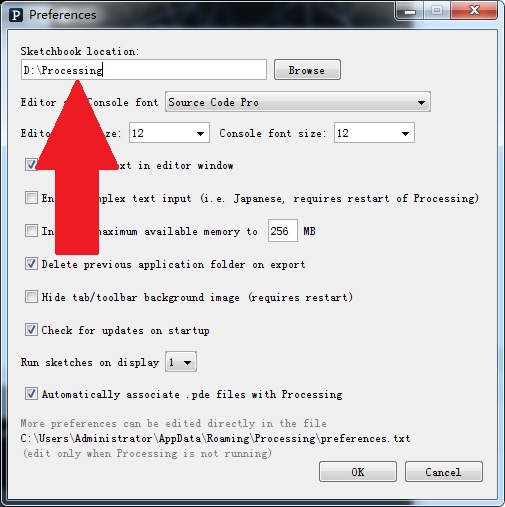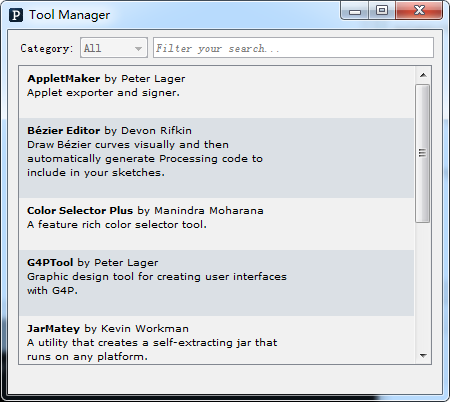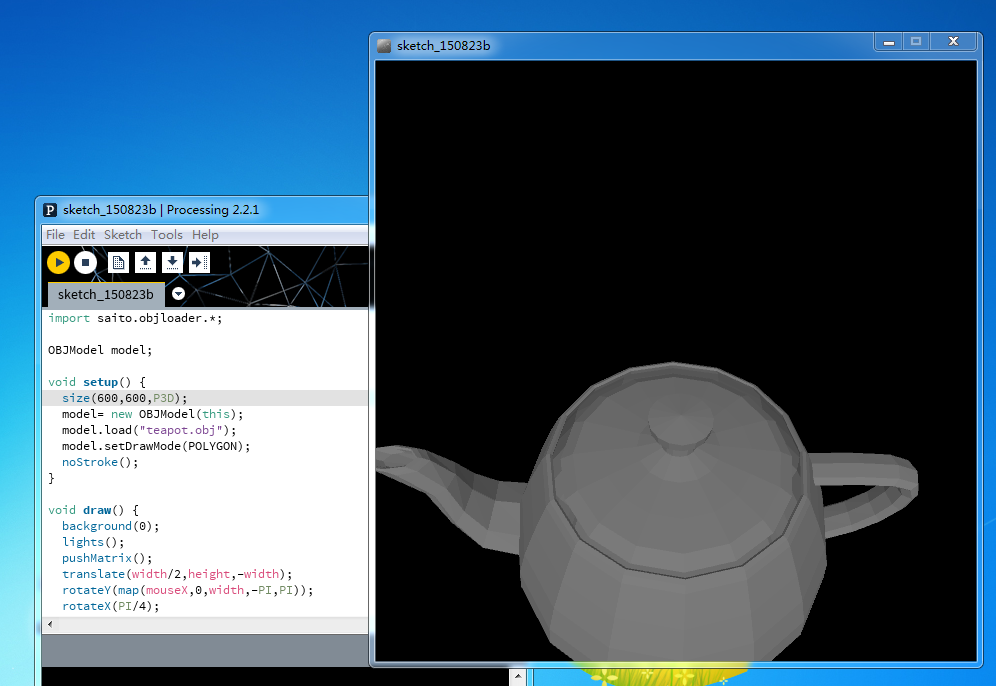有朋友在百度贴吧提了下面的问题【参考1】
“求助 帮我把下面的摄像头代码改成黑白的摄像头”
// Original Source created by Ben Stephenson, University of Calgary
// Code modified by Sandy Graham
////////////////////////////////////////////////////////////////////////////////
// DO NOT CHANGE ANYTHING IN THIS FILE EXCEPT IN THE MARKED REGION NEAR THE
// BOTTOM OF THE FILE.
////////////////////////////////////////////////////////////////////////////////
import processing.video.*;
Capture cam; // the object representing the camera
PImage camimg; // image from the camera
PImage transformed; // the transformed image
float cam_r, cam_g, cam_b; // camera pixel red, green and blue
float trans_r, trans_g, trans_b; // transformed pixel red, green and blue
void setup()
{
String[] cameras = Capture.list(); // get a list of all the available cameras
// and their resolutions / frame rates
if (cameras.length == 0) // check that we have an avaialble camera
{
println("There are no cameras available for capture.");
exit();
}
else // display a list of the cameras
{
println("Available cameras:");
for (int i = 0; i < cameras.length; i++)
{
println(cameras[i]);
}
// This attempts to find a camera with a resolution of 640x480 at 30 frames per
// second. However, there is no guarantee that any particular camera provides
// this resolution / framerate. As an alternative, you can initialize the
// camera as:
//
// cam = new Capture(this, cameras[0])
//
// Use an index other than 0 if you don't like the resolution or framerate of
// camera 0. While the following code won't do anything about a low framerate,
// it will scale whatever image it gets back from the camera to 640x480 with a
// frame rate of 30 frames per second.
//
cam = new Capture(this, 640, 480, 30);
cam.start();
}
size(640,480); // set the window size
camimg = new PImage(640,480); // create images to hold the original
transformed = new PImage(640,480); // and transformed data
// read the first frame from the camera
if (cam.available() == true) {
cam.read(); // read a new frame of data from the camera
camimg.copy(cam, 0, 0, 640, 480, 0, 0, 640, 480);
}
}
void draw()
{
if (cam.available() == true) {
cam.read(); // read a new frame of data from the camera
camimg.copy(cam, 0, 0, 640, 480, 0, 0, 640, 480);
}
////////////////////////////////////////////
// ONLY MAKE CHANGES BELOW THIS POINT
////////////////////////////////////////////
transformed.copy(camimg, 0, 0, 640, 480, 0, 0, 640, 480);
////////////////////////////////////////////
// ONLY MAKE CHANGES ABOVE THIS POINT
////////////////////////////////////////////
image(transformed,0,0); // draw the transformed image on the screen
}
修改方法很简单,加入下面红色代码即可:
////////////////////////////////////////////
// ONLY MAKE CHANGES BELOW THIS POINT
////////////////////////////////////////////
transformed.copy(camimg, 0, 0, 640, 480, 0, 0, 640, 480);
transformed.filter(GRAY);
////////////////////////////////////////////
// ONLY MAKE CHANGES ABOVE THIS POINT
////////////////////////////////////////////
参考:
1.http://tieba.baidu.com/p/4156597158




